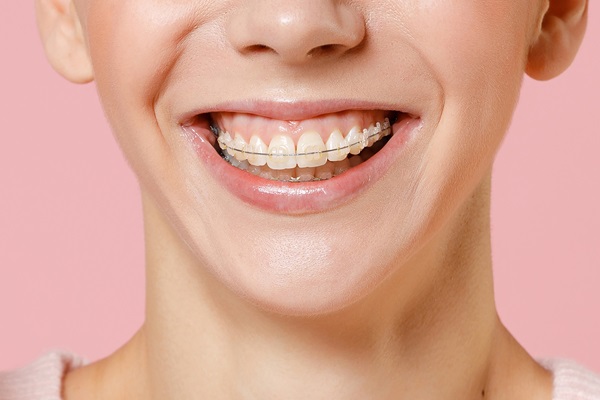4 Tips for Knowing Whether Ceramic Braces Are Right for You

Curious about ceramic braces? Read on to learn more about this teeth-straightening option. Ceramic braces, sometimes known as transparent braces, have been available for decades. Although transparent aligner solutions have made them less popular, they are still a wonderful choice for people seeking reasonably discreet treatment. Ceramic braces provide patients with a less noticeable option for braces that are effective at treating a broad range of alignment problems.
4 Ways to know if ceramic braces are right for you
Ceramic braces, like conventional metal braces, require frequent visits to the dentist. The additional consultation time allows for a more customized treatment approach, resulting in better outcomes and a lower chance of relapse, where the teeth start shifting to their original positions. Treatment with ceramic braces lasts approximately as long as metal braces, which is about 18 to 24 months.
Some of the tips for determining the suitability of ceramic braces include:
1. The need for discreet and aesthetically appealing treatment
Ceramic braces utilize transparent brackets and white or tooth-colored archwires instead of the bulky and conspicuous metal used in conventional braces. Ceramic braces blend in with the teeth and are harder to detect due to their transparency. This is often a significant benefit for individuals who desire a comprehensive treatment option without the appearance of metal braces.
2. The cost of treatment
Ceramic braces are made out of a more sophisticated material than conventional braces. As a result, it is understandable that the average treatment cost for ceramic braces is somewhat greater. Nonetheless, the low-profile feature of ceramic braces may be well worth the extra expense for certain individuals. Ceramic braces may be a preferable option for patients who would be concerned about the look of conventional metal braces as an adult.
3. The need for comfort
Traditional braces are not only noticeable, but they are often inconvenient too. Metal brackets on traditional braces sometimes irritate, rubbing against the lips and causing discomfort and itching. Ceramic braces are made of a less abrasive substance that usually offers a more pleasant overall experience. Ceramic brackets will not irritate the gums or cause chafing on the inside of the cheeks. In reality, most patients only feel discomfort after their tightening sessions, and it is typically quite tolerable.
4. Maintenance requirement
Ceramic braces feature clear brackets and tooth-colored or transparent wires. As a result, they are very stain-prone. Patients need to avoid foods, beverages, and habits (such as smoking) that can stain ceramic braces. Immediately washing the mouth with water and brushing after consuming teeth-staining items can help prevent stains.
Patients who opt to receive ceramic braces will need to pay extra attention to brushing and flossing. If the commitment seems like a lot, it is advisable to look into a low-maintenance treatment alternative.
The bottom line
Aesthetics, affordability, comfort, and maintenance are the major distinctions between ceramic and traditional braces. Ceramic braces may be more practical and appropriate for a patient's lifestyle, depending on their priorities. To know if you are a candidate for this treatment, book an appointment with our dental office today.
Request an appointment here: https://www.bracesbyabbadent.com or call Braces By Abbadent at (563) 484-5202 for an appointment in our Dubuque office.
Check out what others are saying about our dental services on Yelp: Ceramic Braces in Dubuque, IA.
Recent Posts
Teeth straightening is a common treatment that dentists offer to enhance one's smile and improve oral health. There are a few different options that one can consider; however, ultimately, the treatment will depend on the severity of the abnormality, the dentist's recommendation, and the goal. Continue reading to learn more about some of the most…
Teen braces are one of the most common and effective ways to straighten teeth, correct bite issues, and improve overall oral health. For many adolescents, braces offer a reliable solution for aligning teeth and creating a more confident smile. As a trusted treatment, teen braces can provide long-lasting results when properly maintained.Teen braces gradually move…
Braces for kids might be what your child needs to put their teeth alignment problems or bite issues behind them. Pediatric dentists have used braces to address orthodontic issues for centuries, and they are still one of the most commonly used teeth straightening devices.Braces are dental devices that are used to improve teeth alignment. Historically,…
Searching for braces near me is often the first step toward achieving a healthier, more aligned smile. Braces can help correct a range of dental issues, including crooked teeth, bite problems, and jaw misalignment. Although treatment is typically performed by an orthodontist, general dentists play a crucial role in preparing patients for the process and…


